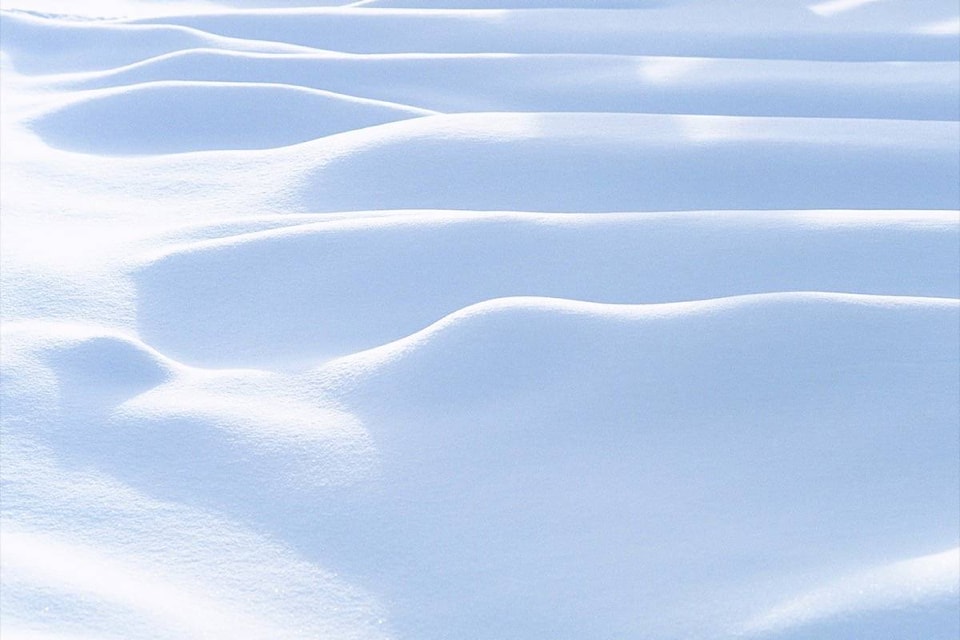Provincial authorities are bracing for more flooding as impending warm weather and rain threaten to rapidly melt an unusually deep snowpack.
“Generally speaking (the snowpack across B.C.) is well above normal,” said Dave Campbell of the B.C. River Forecast Centre Monday in a conference call with reporters Monday.
“There has been melting—even in the upper elevations—at a rapid rate.”
Campbell said while the average B.C. snowpack is 168 per cent above normal, many other regions have seen historic highs. For example, the Okanagan is at 208 per cent of normal, Boundary is at 238 per cent, the Similkameen is at 210 per cent, the Nicola is at 204 per cent and even the Upper Fraser West area west of Prince George is at 264 per cent. The Okanagan amount is the highest observed since 1980.
These high snowpacks are creating a flood risk and in low- to mid-level elevations, snowmelt has been rapid over the last few weeks causing creeks to fill and, in some cases, flood.
In the Okanagan, provincial authorities have been preparing for floods for the last month by releasing water from Okanagan Lake. Last year the lake rose to 72 centimetres above what is known as “full pool.”
Shaun Reimer, section head of Public Safety and Protection in the Thompson Okanagan, said while the increased outflow through the dam in Penticton currently has the lake at 62 centimetres below full pool, information he received Monday indicated a lot more water is expected to enter the lake between now and the end of July. And that, he said, could take the lake level to between 12 and 20 centimetres above full pool later this spring.
Because of concerns with the amount of water flowing into the Okanagan River from tributaries between the dam in Penticton and Oliver, the outflow from Okanagan Lake has been temporarily reduced.
Reimer said that discharge will be ramped up again in a few weeks and to compensate for the current reduction, the outflows will have to be even greater than they were in recent weeks.
With the large amount of snow in the mountains, Reimer said he’s more concerned now then he was a few weeks ago,but predicted the area will not see the same situation as last year given the water that has already been released from Okanagan Lake.
Meanwhile, other areas of the province are also a concern for authorities. The Nicola Lake near Merritt is approaching full pools and areas of the Kootenay and around Prince George could be at the risk of flooding mid- and high-level snow melts quickly with the warm weather.
A total of 13 regional emergency operations centres have been opened across the province, with B.C. First Nations opening 10 more said Chris Duffy, executive director of programs with Emergency Management BC. Seventeen states of local emergency have been declared in municipalities and regional districts across B.C. in addition to eight by B.C. aboriginal bands band councils. Twenty-one evacuation alerts affecting 187 homes have been issued as well as 22 evacuation alerts affecting 555 homes.
Duffy said two million sandbags have been distributed across the province and several sandbag filing machines are now in use across B.C, many of them in the Okanagan.The province has even borrowed some from Saskatchewan.
One hundred and fifty B.C. Wildfire firefighters have been deployed to help and a kilometre of gabian dam and 10 kilometres of tiger dam have also been provided to B.C. communities for flood prevention.
To report a typo, email:
newstips@kelownacapnews.com.
@KelownaCapNews
newstips@kelownacapnews.com
Like us on Facebook and follow us on Twitter.
